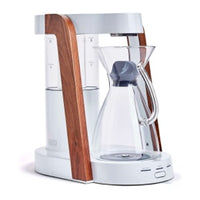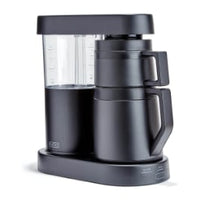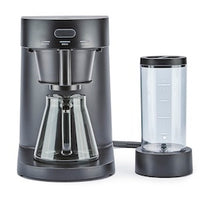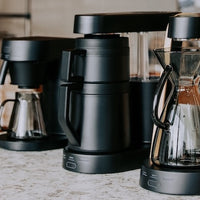Why Certain Weather Days Make Coffee Taste Flat
Key Takeaways
-
Weather changes can subtly influence how coffee tastes due to humidity, air pressure, and temperature shifts
-
High humidity can affect grind consistency and brewing balance
-
Low air pressure can impact extraction rates, especially for espresso
-
Cooler temperatures may dull perceived flavors, while hot days may emphasize acidity
-
Controlling brewing variables helps offset environmental effects for consistent results
Have you ever brewed your favorite coffee, confident in your recipe, only to find it somehow tastes muted or “off” — even though you did everything the same? Sometimes, the culprit isn’t your beans or technique, but the weather outside.
Environmental conditions like humidity, air pressure, and temperature can subtly influence how coffee tastes. While professional cafés have ways to control for these factors, home brewers often don’t realize that Mother Nature can play a role in what ends up in the cup.
The Role of Humidity in Brewing
Humidity affects coffee in two key ways: during storage and during grinding.
Storage impact: Coffee beans are hygroscopic, meaning they absorb moisture from the air. On humid days, they can take on extra water, which affects their density and weight. This can subtly shift the way they interact with hot water during brewing, sometimes leading to flatter or less vibrant flavors.
Grinding impact: High humidity can cause coffee particles to clump together, especially if your grinder has static issues. This can lead to uneven extraction, with some grounds over-extracted (bitter) and others under-extracted (sour).
How to counter it:
-
Store beans in airtight containers with minimal air space
-
Consider grinding just before brewing to minimize moisture absorption
-
On humid days, pay extra attention to grind consistency and adjust if necessary
Air Pressure and Extraction
Air pressure changes, particularly those that come with weather systems, can influence brewing in more subtle ways.
For manual brewing methods like pour-over, a drop in atmospheric pressure (often ahead of a storm) can slightly affect how water flows through coffee grounds. For espresso, the effect is more noticeable—lower pressure can mean a slower flow rate, which in turn can cause over-extraction if your recipe isn’t adjusted.
How to counter it:
-
For espresso, monitor shot times closely and adjust grind or dose if you see big changes
-
For pour-over, keep an eye on brew time—if it’s slower than usual, coarsen the grind slightly
Temperature and Perception of Flavor
Our perception of coffee’s flavor changes with temperature. On colder days, coffee in a room with low ambient temperature cools more quickly, which can mute sweetness and enhance bitterness sooner. On hot days, the opposite can happen—coffee stays warmer longer, and acidity might seem more pronounced.
Even the temperature of your brewing space matters. If your kettle, dripper, or mug is colder than usual, you could lose heat faster than intended, affecting extraction balance.
How to counter it:
-
Preheat all brewing equipment on cold days
-
Adjust your drinking temperature expectations—some coffees taste better slightly cooler, others when piping hot
Why Cafés Stay Consistent Year-Round
Professional coffee shops often have climate control, humidity monitors, and water filtration systems that help stabilize brewing conditions. Baristas regularly calibrate grinders and brewing recipes based on environmental factors.
At home, you may not have such precise controls—but you can borrow some of their habits.
Practical Tips for Weather-Proof Brewing
-
Track conditions: Keep a small brewing journal that notes the day’s temperature, humidity, and air pressure (many weather apps provide this).
-
Adjust grind: On humid days, slightly coarsen your grind; on dry days, you might go finer.
-
Mind your water temperature: Adjust slightly warmer in cool environments and slightly cooler on hot days.
-
Protect your beans: Use airtight, opaque containers and store away from direct sunlight.
-
Stay flexible: Taste your coffee and be willing to make minor tweaks instead of sticking rigidly to one recipe.
A Note on Seasonal Beans
Sometimes the weather isn’t the only factor—seasonal coffee beans can vary in moisture content, density, and flavor profile. If you’re switching between fresh crops and older stock during a seasonal change, these differences can compound the weather’s impact.
This is why it’s especially important to be aware of all variables when chasing consistency.
The Ratio Coffee Approach
When using a coffee machine from Ratio Coffee, you benefit from a brewing process designed for temperature stability and consistency—two factors that help counteract environmental swings. Pair that with mindful grind adjustments and proper storage, and you can enjoy a balanced cup, rain or shine.
Weather Awareness as a Brewing Skill
Paying attention to the weather might seem like overkill for home coffee brewing, but once you notice the connection, it’s hard to ignore. Small environmental changes can create noticeable shifts in your coffee’s profile.
The good news? With a little awareness and flexibility, you can adapt and still enjoy a cup that tastes just as good on a stormy, humid day as it does on a crisp, dry morning.
Frequently Asked Questions
Does humidity affect green coffee beans the same way as roasted beans?
Yes, though green beans are typically stored in controlled conditions. Once roasted, they become even more sensitive to moisture changes.
Can air pressure changes really make a noticeable difference at home?
For most filter brewing methods, the effect is subtle. For espresso, especially with sensitive equipment, it can be more obvious.
Should I change my coffee-to-water ratio based on weather?
It’s not always necessary, but if you consistently notice flavor changes on certain days, adjusting the ratio by a gram or two can help.
How can I measure humidity without special equipment?
Most smartphones have weather apps that provide local humidity levels. Standalone hygrometers are also inexpensive.
Is it worth investing in a dehumidifier for my coffee space?
If you live in an extremely humid climate and store beans for more than a week at a time, it can be beneficial.
 Ratio Eight S2
Ratio Eight S2
 Ratio Eight Original
Ratio Eight Original
 Ratio Six
Ratio Six
 Ratio Four
Ratio Four
 Compare Machines
Compare Machines






